Black Canyon-Colorado River: Kayaking & Hiking
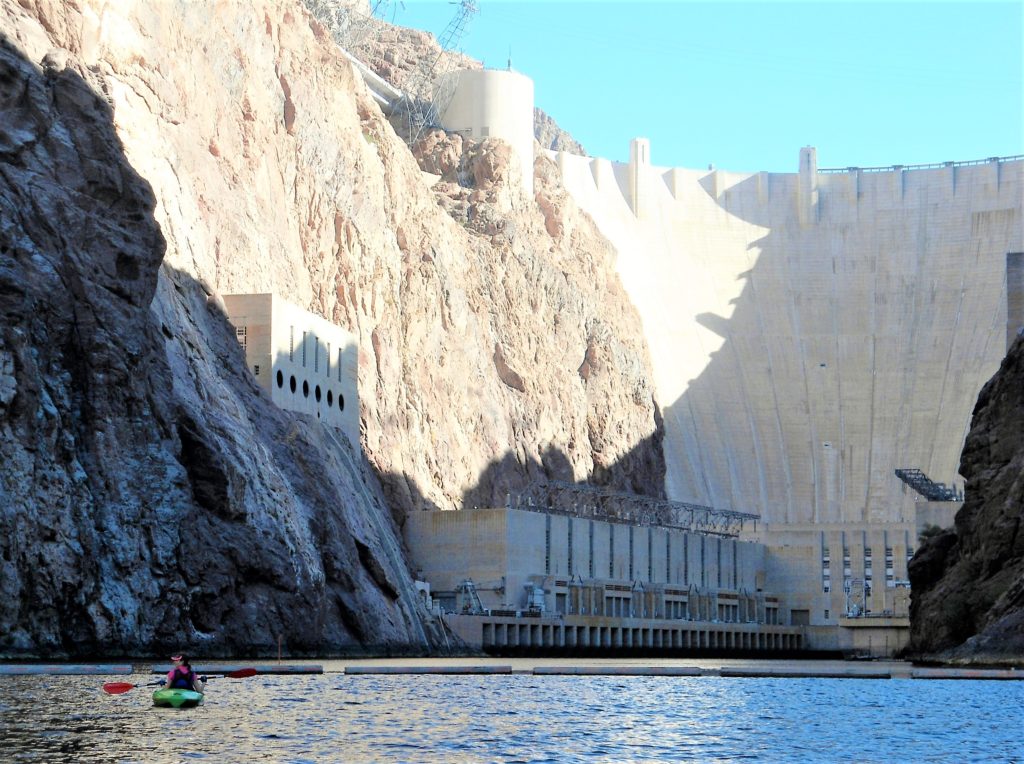
More than a million tourists visit Hoover Dam each year. For outdoor travelers, however, the main attraction at Hoover Dam is not the engineering, but the kayaking and hiking. Here’s how you can explore the Black Canyon of the Colorado River below Hoover Dam, by boat and by foot.
Black Canyon Water Trail
The Black Canyon lies below Hoover Dam on the Colorado River, just 45 minutes from Las Vegas on the Nevada-Arizona border. The Black Canyon Water Trail extends thirty river miles down to Lake Mojave/Eldorado Canyon. But the signature river trip is the 11.7 mile paddle from Hoover Dam to Willow Beach, Arizona.
The Black Canyon paddle is a permit-only trip (details below) that launches from a restricted area below Hoover Dam. With an advance permit, paddlers will enjoy exclusive access to the Colorado River in a rugged, desert canyon.

The Colorado River is best known for its world-class white water, but the Black Canyon section is moving flat-water. For the most part, the paddling itself is pretty easy. There are no rapids–just fluctuating currents with occasional boils to avoid.
But the scenery here is pretty special. For starters, your paddle literally starts in the shadow of Hoover Dam, which towers more than 700 feet above you. It’s worth exploring the flatwater below the dam–there’s plenty to see here before you paddle down stream. Once you leave the dam, you’ll be floating down the Colorado River. For several miles, you’ll be looking up at rugged cliffs–and gazing down into the clear waters of the Colorado, which appears emerald green in the sunlight.
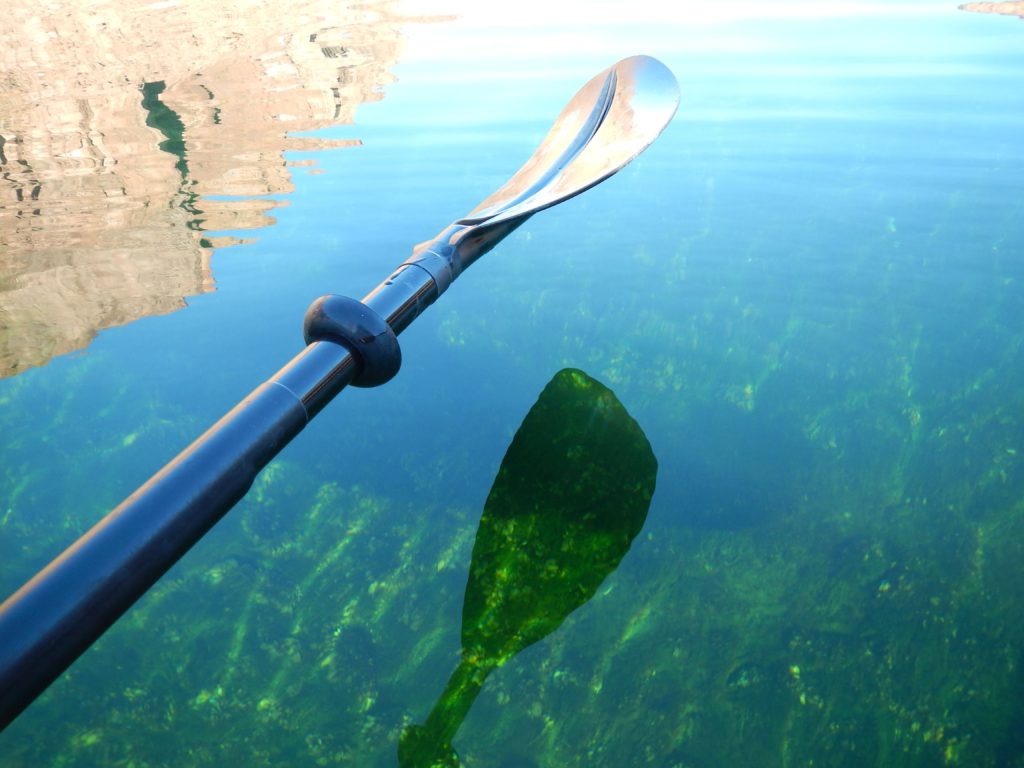
It’s worth scanning both the Nevada and Arizona shores for small coves, caves, and waterfalls carved into the Black Canyon’s stark, volcanic cliffs. You’ve also got great odds of spotting desert bighorn sheep along the cliffs.
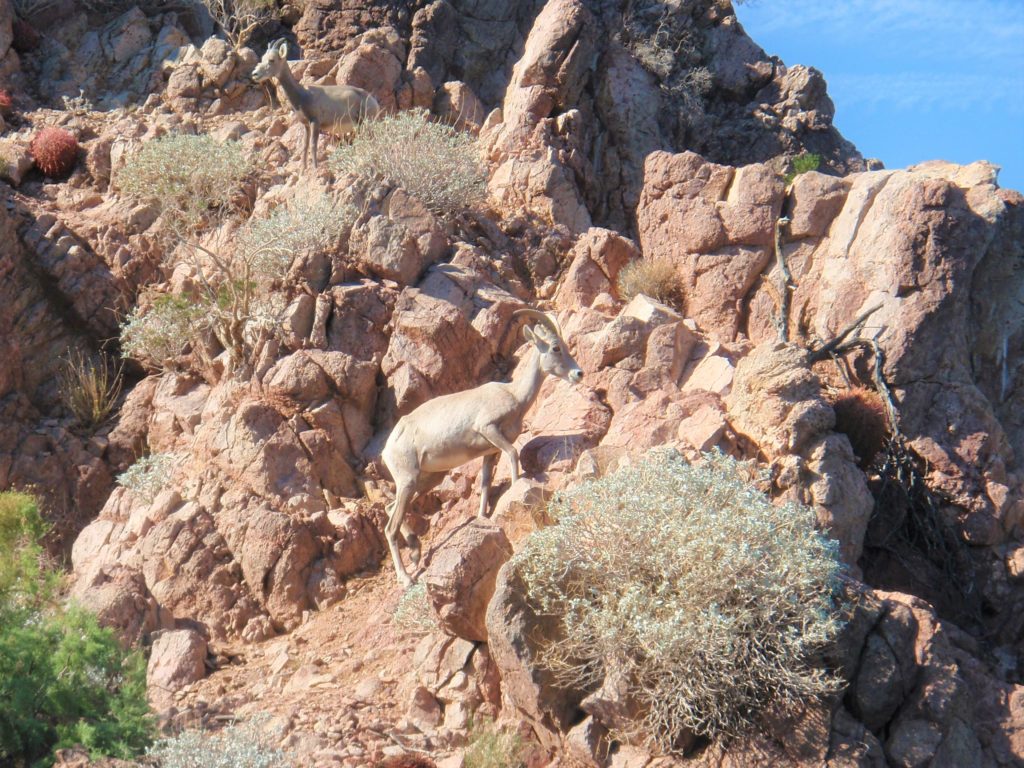
Hiking the Slot Canyons
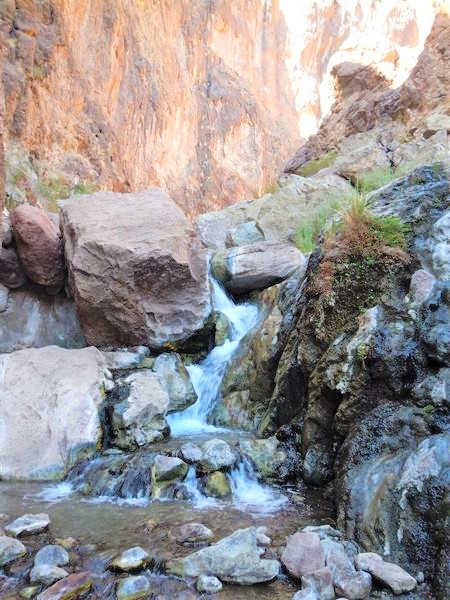
Hoover Dam, desert cliffs, and the Colorado River make for scenic paddling. In many ways, however, the Black Canyon is more of a hiking trip than a paddling trip. The paddling itself is pretty basic–the entire trip would only take a few hours of casual paddling. The real draw of the Black Canyon is hiking the slot canyons.
The fun and difficulty pick up a notch when you pull into the slot canyons, especially Gold Strike Canyon and Boy Scout Canyon. Look for both canyons on river right within the first 1.5 miles of the trip. Tie up your boat, tighten your sport sandals, and head up the washes for waterfalls, boulders, funky algae, and some difficult scrambling.
The first 1/2 mile of each slot canyon should be accessible for most hikers. With some wading and scrambling, everyone should reach some hot springs and slimy algae cliffs–both of which turn fifty shades of green, due to the minerals and geothermal activity in the Black Canyon.

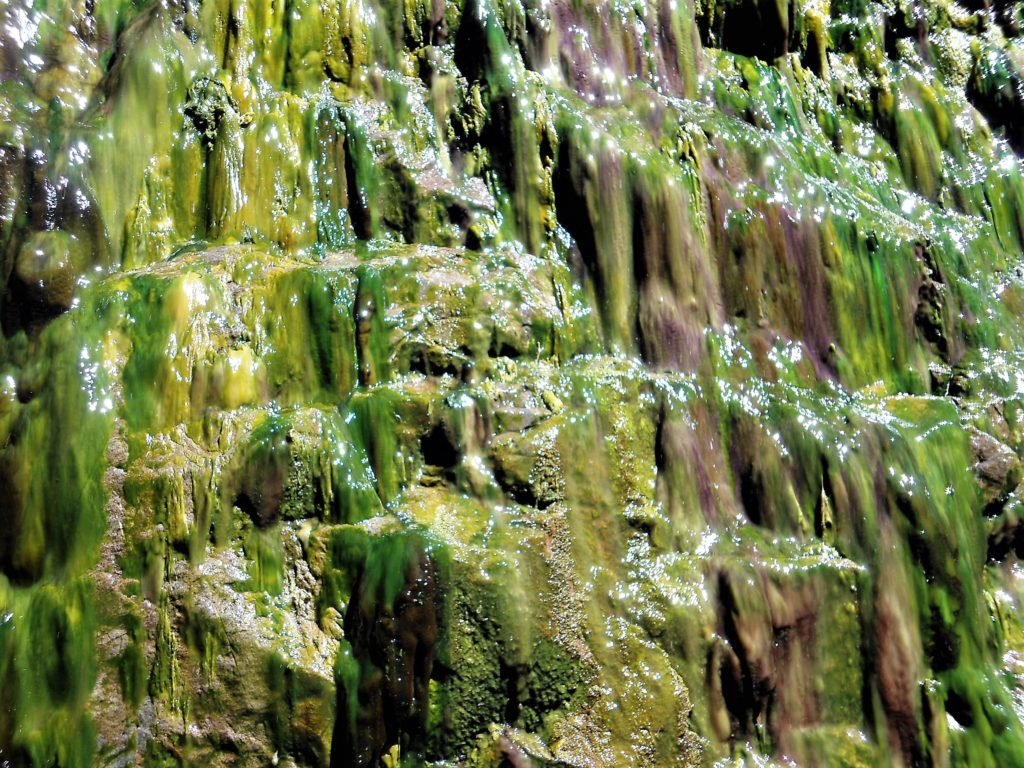
However, the hiking soon shifts from easy to difficult. Gold Strike Canyon and Boy Scout Canyon are strenuous hikes with scrambling and bouldering, some of which involves fixed ropes. Rock climbers and canyoneers won’t find this particularly difficult, but some waterfalls, boulders, and rock walls will be challenging for casual hikers, especially with wet footing. Difficult or not, this entry-level canyoneering is definitely fun. Just head up the canyon as far you can–and turn around when you reach a waterfall or rock wall that seems too difficult or risky.
Black Canyon Hot Springs
For me, the hiking is the Black Canyon’s biggest draw. But many people travel here to soak in the natural hot springs. The geothermal attractions begin within a few hundred yards of Hoover Dam at the Sauna Cave. Look for a small lagoon on river right and scramble up the bank to find the cave’s semi-hidden entrance. With sport sandals and a headlamp, you can wade through shin-deep hot water until the steamy tunnel dead-ends after a couple hundred feet.
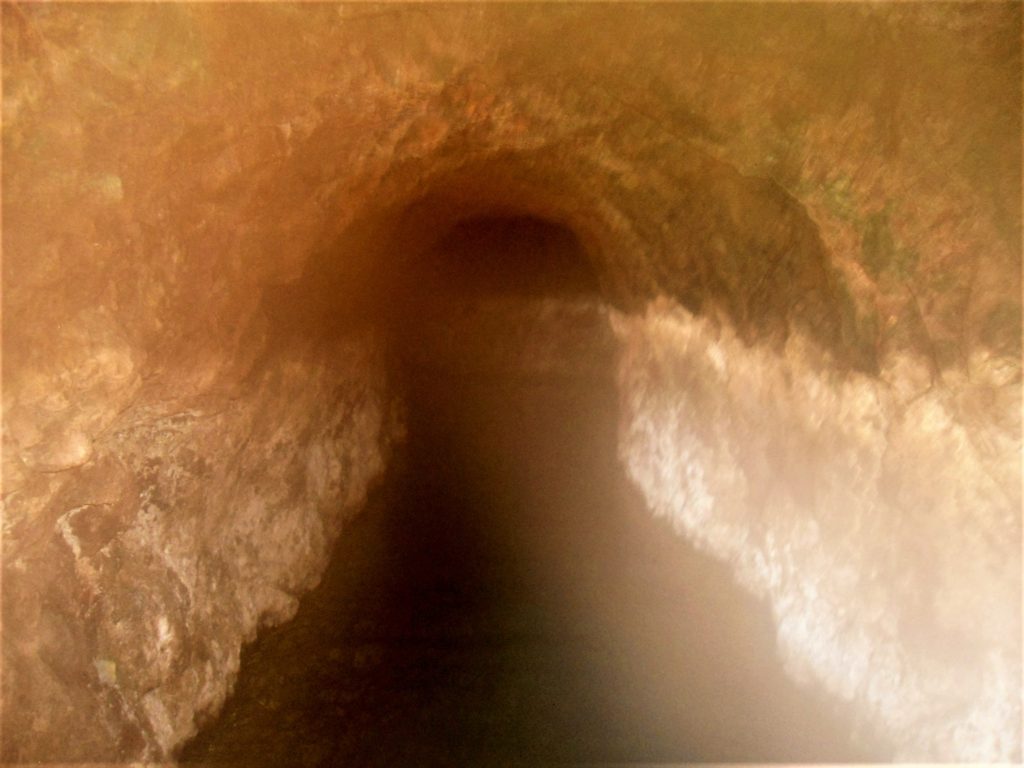
You can experience several hot springs in Gold Strike Canyon, Boy Scout Canyon, and Arizona Hot Springs. The biggest pools are at Arizona Hot Springs, which is the most popular camping spot in the Black Canyon. River runners can access Arizona Hot Springs by hiking up the wash a quarter mile and climbing a metal ladder to enter a series of red rock pools.
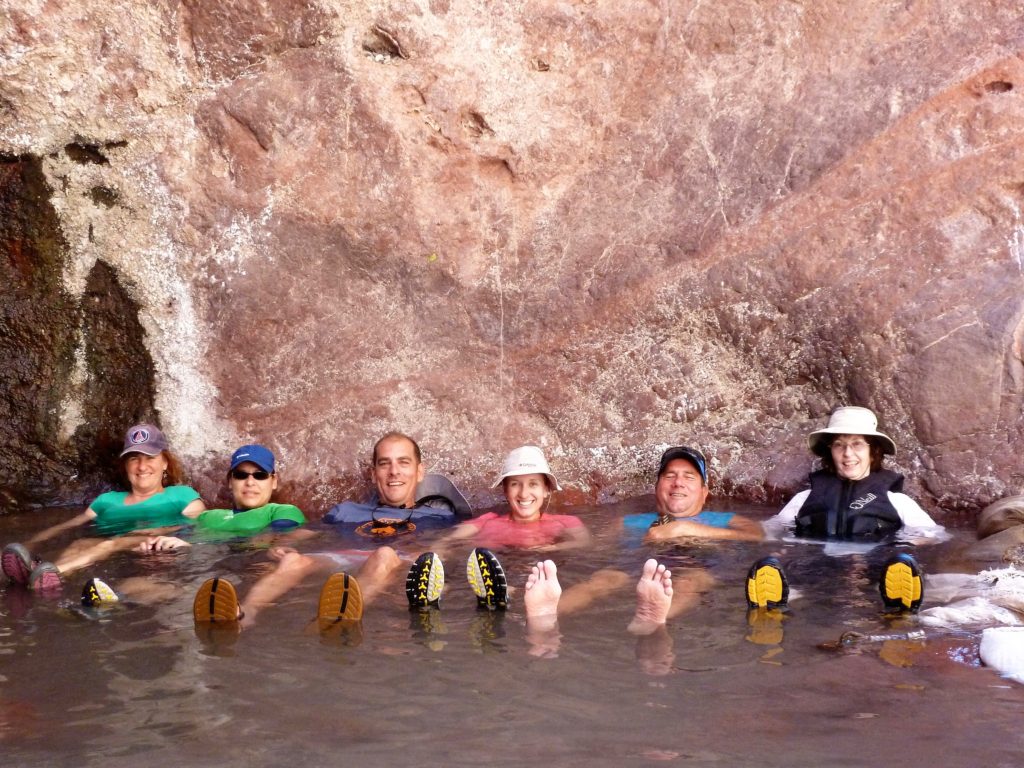
Arizona Hot Springs can be overrun on the weekends. If you like privacy, you might choose to camp in another canyon. If you do opt for AZ Hot Springs, however, you can enjoy the hot springs, luxurious pit toilets, and a scenic campsite:

AZ Hot Springs to Willow Beach
The main attractions of the Black Canyon are concentrated between Hoover Dam and Arizona Hot Springs. Motivated hikers can easily spend a whole day in this short stretch of river–or maybe two–scrambling up the slot canyons and dipping in the hot springs. However long you’re here, you should spend at least 2/3 of your time in the first four miles of the canyon.
The trip isn’t as interesting below AZ Hot Springs. The canyon opens up, the current slows, and the slot canyons disappear. You’ve got good odds at spotting desert bighorns on the cliffs. For the most part, however, there’s not much to savor along the flat-water stretch above Willow Beach. The main highlight in the lower stretch of the Black Canyon is Emerald Cave, which glows best in the afternoon sunlight:
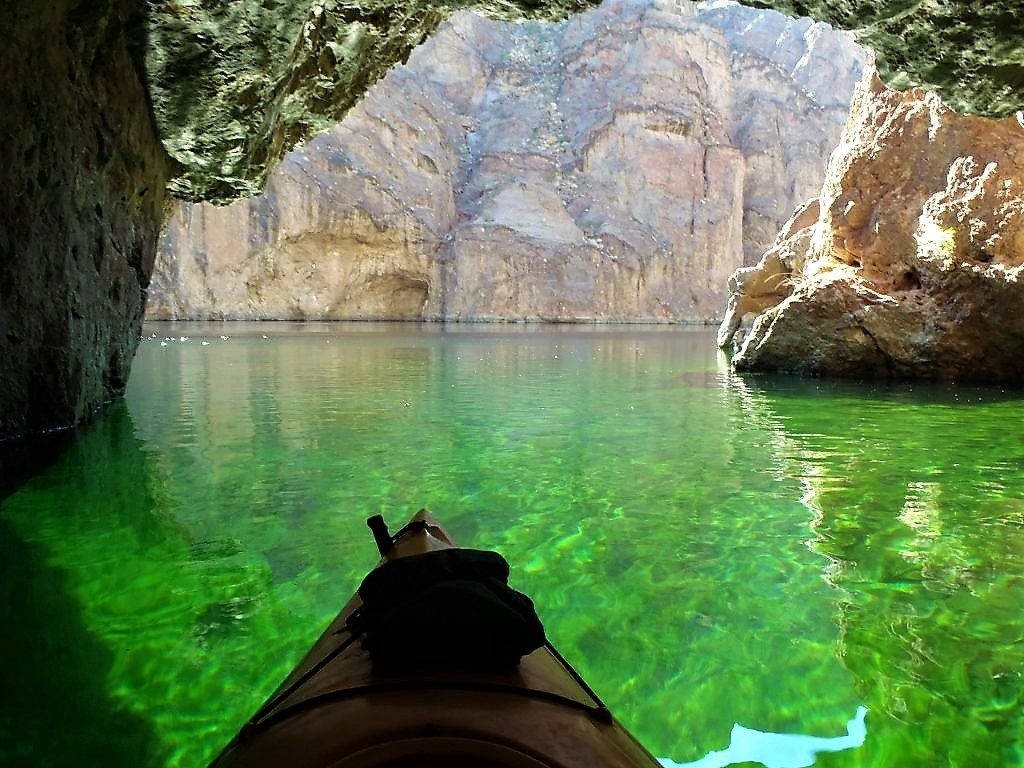
You’ll miss this view of Emerald Cave if you paddle in the morning. However, many paddlers leave early in the morning to avoid headwinds that frequently pick up in the afternoon. If you choose to paddle early, you may miss Emerald Cave, but you may have miles of the Colorado River all to yourself.
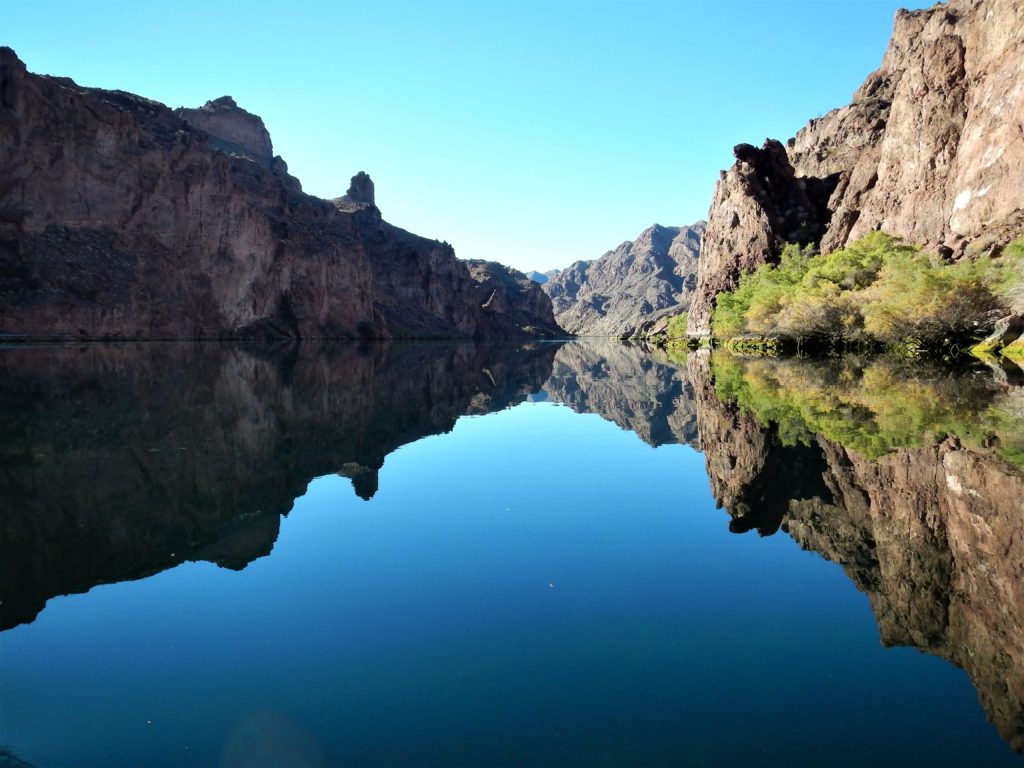
Black Canyon Trip Rating
This trip has a little bit of everything: one of the world’s largest dams, scenic slot canyons, desert hot springs, sea caves, wildlife–even brain-eating amoebas (seriously–see below)! It can be a relaxing overnight trip with easy paddles and lazy soaks in hot springs–or a fairly aggressive trip with hours of slot canyon scrambling. It’s a great trip, either way. Make this an overnight trip to leave enough time for hiking and the springs.
They say that what happens in Vegas, stays in Vegas. However, if you stay in Las Vegas–and don’t sneak off to the Black Canyon for a couple days–you’ll be missing out on a top outdoor travel destination in the Southwest.
Is this your kind of trip?
If so, here’s more detailed information on permits, reservations, approved outfitters, safety tips, and recommendations to make the most of the Black Canyon:
Permits & Reservations
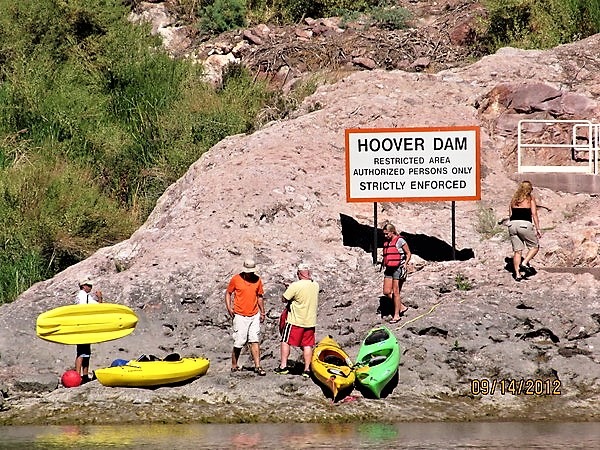
The Department of Homeland Security has restricted access to Hoover Dam for national security reasons, and the Bureau of Reclamation limits daily access to 45 paddlers to maintain the watershed. Thus, to launch a kayak from below Hoover Dam, you must first
- book a reservation through an outfitter approved by the National Park Service (list here). Make reservations well in advance, especially for weekend trips.
- Once you’ve booked a reservation with an approved outfitter, you then can apply for a launch permit.*
You have the option of renting boats through these livery services or having them shuttle your personal watercraft. I’ve had good luck with Desert River Outfitters.
* You do not need a permit to paddle upstream from Willow Beach. It’s possible to paddle upstream when the dam is not generating electricity (low flow). However, this may be nearly impossible when the dam is generating electricity (especially from AZ Hot Springs to Hoover Dam).
hiking and camping safety
The desert is dangerous–especially in summer. Here are some tips for minimizing your risks of heat related illnesses, accidents, and flash flooding:
- The best time to visit is October through April. Due to extreme heat, skip the Black Canyon in the summer (where the slot canyons regularly reach temperatures of 120 F/49 C). Due to heat-related illnesses and fatalities, the National Park Service now closes the trailheads to Goldstrike Canyon and Arizona Hot Springs from May 15 through September 30. (Seasoned desert hikers may be able to manage the heat in May and September, but the hot springs are better in cooler weather, anyway.)
- The slot canyons are vulnerable to flash floods, particularly during the summer monsoon (when you should avoid the canyon). Don’t camp in the slot canyon washes when there’s a chance of rain, and be prepared to scramble to higher ground in the event of a rainstorm.
- Rattlesnakes are common here. Watch where you put your hands and feet, and leave snakes alone if you do see them. If you’re lucky, you may spot a diamondback, sidewinder, or California king snake.
- Enjoy the slot canyons! But know your ability, and don’t hike alone. People die each year in these canyons, and the number of rescues in Goldstrike Canyon and Arizona Hot Springs have more than doubled in the last five years. Don’t take unnecessary risks, pack plenty of water, hike with buddies, and turn around if you’re not confident about getting up–and down–any waterfall, boulder, or rock wall.
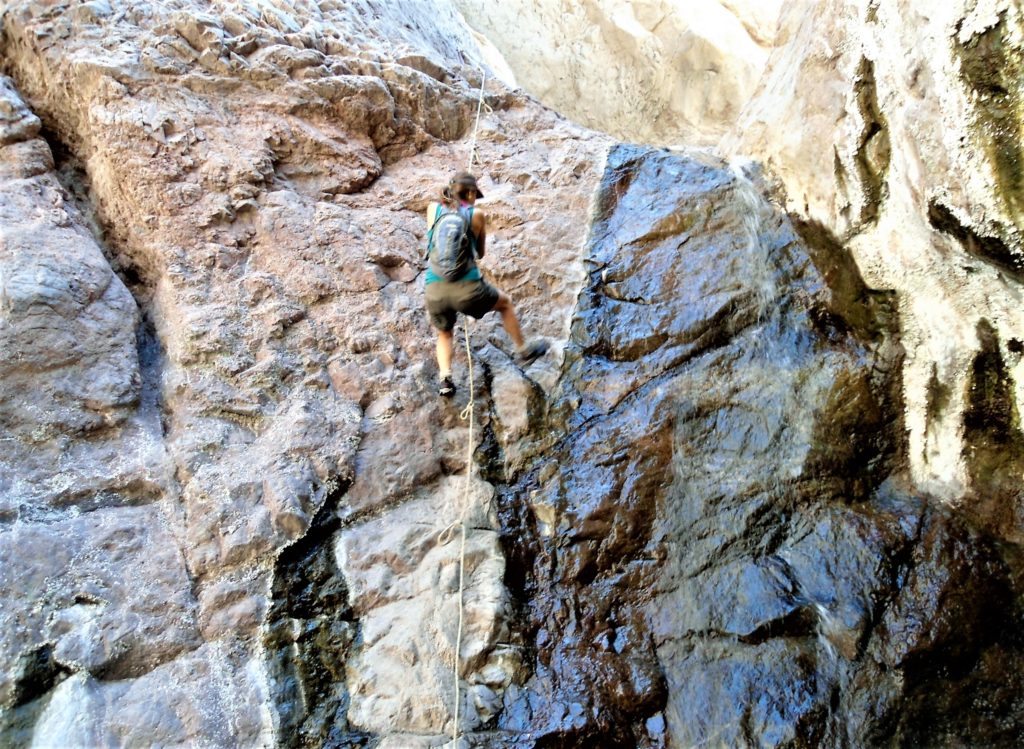
Water Safety
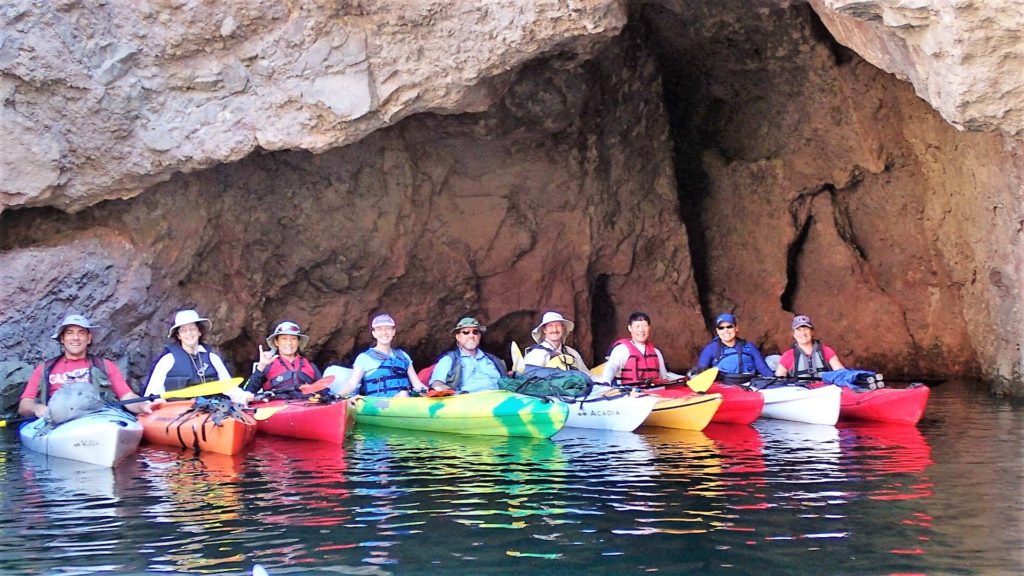
This stretch of the Colorado River may be basic, recreational paddling, but the water also poses some risks:
- Current. Hoover Dam has mostly tamed this stretch of the Colorado, but water levels can change rapidly depending on the hydroelectric activity. Strong paddlers will be able to paddle upstream in lower water conditions—but not if the dam is producing electricity. Expect flow rates to change at any time without warning. There are not many water features on this stretch of river, but avoid visible whirlpools/boils on the surface.
- Tie up your boats. (You don’t want them to float away when the Colorado River rises 5 feet in 15 minutes to generate electricity.)
- You’re not likely to capsize. But if you do, things could get tricky–the current often runs fast, there’s little shoreline, and the risks of hypothermia are very real (even on hot days) with year-round water temps in the low 50s. You should know how to perform an open water self-rescue–or, at the very least, paddle in a group who can assist in an open-water rescue. Always wear a PFD (and opt for a sit-on-top kayak if you’re inexperienced).
- Powerboat traffic. If possible, request Sunday and Monday reservations on the Black Canyon, when powerboat traffic is not permitted. Otherwise, paddle in groups and make yourself visible to approaching boats.
- Finally, the hot springs can pose another rare danger: Naegleria fowleri. This lethal amoeba can enter your body through the nose, eat its way into your brain, and cause a fatal infection. To avoid the risk of death-by-brain-eating amoeba, keep your head above the water in the hot springs. This infection may be rare, but naegleria fowleri are “common” in the hot springs and have caused deaths in Arizona.
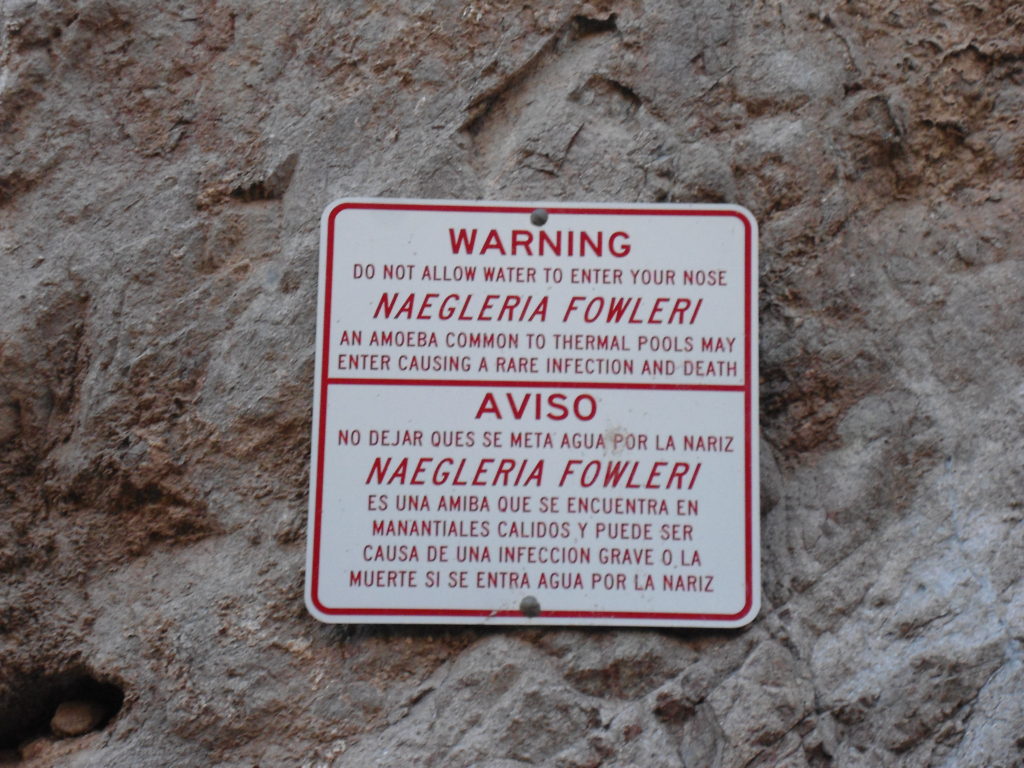
Go for it
The Black Canyon is a great place to hike, paddle, and travel. This is a great side trip on your Vegas vacation. And it’s a unique outdoor experience that may be worth an annual trip if you live in the Southwest. Slot machines have nothing on slot canyons. So get outside and enjoy this unique paddling and hiking experience below Hoover Dam on the Nevada-Arizona border.